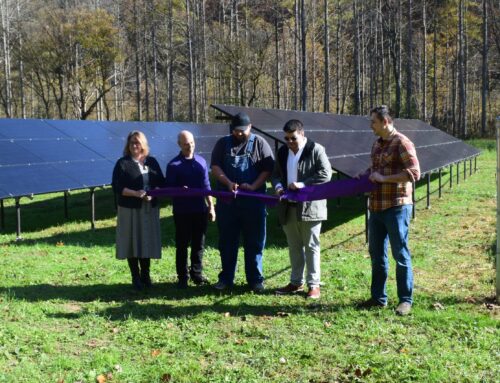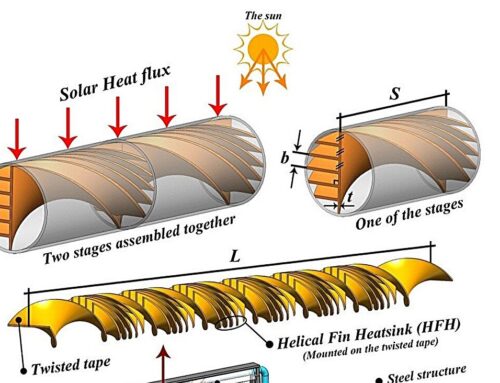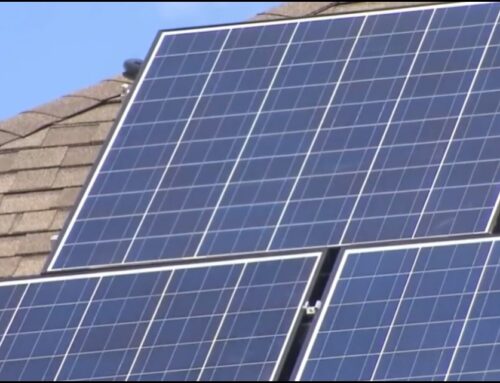Journey to the frontiers of climate change
December 28, 2024
Aminata is pregnant and working in the fields of a heat-stifled village in Gambia. Recent international research using her village as a model warns that high temperatures pose a serious risk to her health and that of her baby. Andy Ouedraogo Regma is an octogenarian from Burkina Faso who is surviving, as if from an illness, the worst heat in the last 200 years in the Sahel, on a continent where experts suspect, albeit in the absence of reliable data, that deaths from heat stress are soaring. Meanwhile, in Thailand, suicides are increasing in the hottest months and emotions are running high due to the restrictions on movement imposed by high temperatures.
These are real stories from countries in the Global South, where the climate emergency and extreme events like the recent floods in Spain are a daily reality, and where warming and its effects are advancing faster than the global average. An example: between 1970 and 2021, Africa accounted for 35% of climate-related deaths, while only 40% of Africans have access to early warning systems.
Floods, droughts and heat waves are exacerbating existing humanitarian crises, and in addition to the human cost of this perfect storm, the economic burden is disproportionate. According to estimates by the World Meteorological Organization (WMO), Africa loses between 2% and 5% of its GDP just responding to extreme weather events. That is why, summit after summit, and as happened at COP29 in Baku, the leaders of the Global South are once again demanding climate justice. They are asking for the transfer of funds and technology to survive a major emergency that they did not create, but which they are suffering from more than the rest of the world.
Gambia
Thailand
Burkina Faso
Pregnant under a scorching sun
Keneba (Gambia)
By Silvia Blanco
Boubacar and Aminata have just made a major investment. For the first time, they have a fan. They live in Keneba, a small village in Gambia two and a half hours inland by car from the capital, Banjul. The device has a special place in the shack with a corrugated iron roof and cement walls, where they live with their three children and the baby on the way. They have placed it next to the television and the bed in the main one of the two dark rooms of the house, where the chickens come and go. In one of the regions of the world where extreme heat hits hardest, where having air conditioning is a luxury and power cuts are frequent, the warm air that the fan blows out is hardly a relief for those who suffer on the front line of the effects of climate change caused by rich countries.
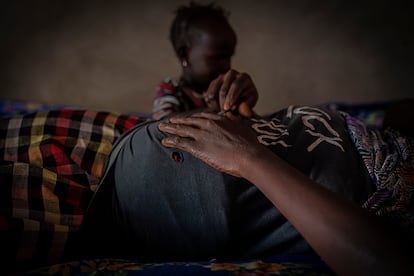
In Keneba, at 10 a.m. on a May day, it is already 36ºC, but the temperature feels like 39ºC. The sand in the streets is burning, and only the shadow of the towering mango trees and the occasional morning cloud provide relief. Later, there is hardly any shelter from a temperature that within a few hours climbs to 39ºC and feels like 42ºC, according to the measurements of the weather portals. At midday, there are still children playing football near the school and women in floor-length dresses and veils in the local, dim, covered market, where there are only tomatoes, peppers and onions on sale. The fish stand, a rusty, smelly chest, has already closed. The village empties in the afternoon, when the heat rises and only cows can be seen under a tree. Three children ride by on a donkey.
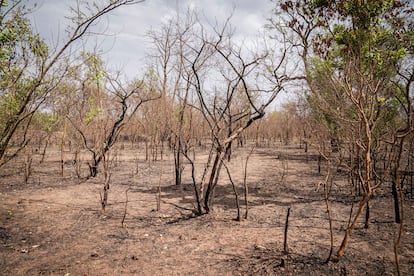
“Some days it’s unbearable,” says Boubacar, 47, standing next to the brand new fan. One of the two rooms in the house is occupied by jars and containers for storing water. The only tap is in the backyard, next to the hole that serves as a urinal. It’s difficult to stay away from the heat in the house, and the hardest place is the kitchen, a bonfire in the full sun where mangoes are cooking. Boubacar, who is a bricklayer but has not been able to work today because there is no active construction, is wearing shorts when Aminata, 30 years old and pregnant, returns from her obstetric check-up at the clinic run by the London School of Hygiene and Tropical Medicine (LSHTM) in the village. Now she is going to start cooking the meal, the most stifling moment of the day: next to the fire, in full sun.
In the waiting room of the medical center where Aminata was seen, four other pregnant women are waiting for tests. It is the only place with air conditioning in the whole village. “We can’t have it at home, it’s too expensive, we can’t pay the electricity bill,” says Aminata, whose method of cooling off is taking a shower, that is, pouring cans of water over herself. “The heat is the worst part of pregnancy,” she says, adding she can barely sleep: “At night you can’t stay in bed, I have to go out for some fresh air.” This heat that is not usual: the average temperature in Gambia has risen by 1ºC in six decades, and every two years there is an extreme event (droughts, floods) that shows the country’s vulnerability to climate change, according to an IMF study published in February.
Pregnant women exposed to extreme heat are more likely to have premature birth, pre-eclampsia, pulmonary embolism… and babies are at risk of stillbirth and low birth weight”
Ana Bonell, researcher at LSHTM
But expecting a baby and physical labor in such temperatures is a risk that women, who make up half of the Gambian agricultural workforce, can barely protect themselves from. “We know from recent studies that pregnant women exposed to extreme heat are more likely to have premature birth, pre-eclampsia [a very serious illness associated with pregnancy], pulmonary embolism… and babies are at risk of stillbirth and low birth weight,” explains Ana Bonell, a researcher at LSHTM and lead author of a field study analyzing the physiological impact of heat stress on subsistence farmers in Gambia. The work was carried out in Keneba, where Aminata lives, with a hundred pregnant women, and was published in the scientific journal The Lancet in 2022. The results are eloquent: the 92 pregnant women who participated in the study, carried out between August 2019 and March 2020, were exposed “to high levels of heat stress, much more than we expected,” says Bonell. “There was not a single day when we did not measure some degree of exposure to heat stress in the farmers.”
In August, another, much larger study began with 800 pregnant Gambian women working in the fields. “Physical activity or hard work increases internal heat production, which in turn can lead to thermal stress, which is the body’s physiological response to total exposure to heat, and which is manifested in heart rate and body temperature,” explains Bonell in her office at the LSHTM headquarters in Gambia. The most common symptoms reported in the first study were dry mouth, headache and muscle cramps. For the baby, the researcher and her team found a strong correlation between this exposure to thermal stress and fetal stress, which is deduced by a heart rate above 160 or below 115, and by poorer functioning of the placenta. “We found high levels of thermal stress, despite the fact that it is a population acclimatised to heat,” she adds.
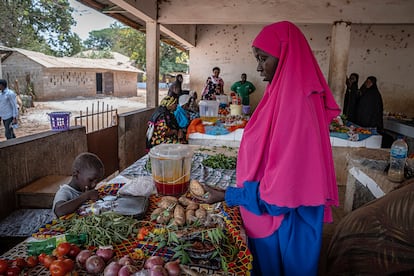
Aminata’s day starts at 6 a.m. with a prayer. Then she sweeps, cleans, prepares breakfast for her children and takes care of all the household chores until 9 a.m., when she goes to the market to grind fish with her machine, which her clients will then turn into meatballs, or to sell what she takes from her garden. At noon she starts to prepare the meal, which takes hours, because she cooks with firewood. Afterwards she takes a nap, as long as it is not the wet season: if it is, she goes to the fields to work until dinner time, which she also prepares on the fire. Whatever the weather. “I can’t stop working because I’m pregnant,” she says.
The new project by Bonell and her team seeks to delve deeper into these findings by looking at how extreme heat affects the “physiology, sleep, well-being and nutritional intake” of pregnant women, but also to find out whether, one month after delivery, “there is any indication that the impact of heat on neurodevelopment can be detected” in babies. There is a considerable body of scientific research studying the impact of heat on pregnancy, but two years ago Bonell’s was one of the few in a real environment with pregnant women naturally exposed to extreme temperatures. There is something else: “Women engaged in subsistence farming are an often ignored group in terms of occupational risks and the health of the workforce. They have very little decision-making capacity on how they can avoid the stress they experience, and their voice is barely heard on a global scale.”
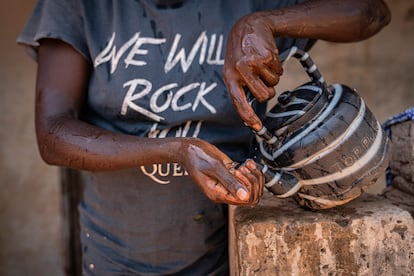
The person who listens to what pregnant women say every day is the midwife Edrissa Sinjanka, a man who is dedicated to his work and, without being part of Bonell’s research team, has been sharing information and impressions with them. Years ago he began to be alarmed by the impact that heat had on the pregnancies he saw — “they come with dizziness, hypotension, excessive sweating, a feeling of being short of breath” — but his patients did not seem to understand it as a risk, something that is behind premature births or miscarriages. “Some do not believe it is a problem because it is what they have always seen. But I always advise them to have water at hand, especially when they go to work in the garden, and to try not to work in full sun, or to do so at a time when it is not so strong,” he explains.
Back home to cook, Aminata shows the nearby vegetable garden, which has gone unwatered for several days. There is not much that can be done until the pump is fixed. And if it is difficult to stay inside during the day, it is also difficult to sleep at night, which increases stress and irritability. The children wake up and do not fall asleep “until two or three in the morning,” says Boubacar, who says that often the whole family ends up on the porch, next to a stone bench, to try to rest, although the only mosquito net that protects them in a malaria area is on the bed. He explains this while sitting next to the fan, the fragile hope of respite that they have been able to achieve.
Heat that alters emotions and affects mental health
Bangkok (Thailand)
By Rebecca L. Root
Saturday morning in Bangkok. The thermometer reads 34ºC, a far cry from the 52ºC recorded in April, but still too hot. Residents of the Thai capital shun the lush gardens of Benjakitti Forest Park, where wetlands and wildlife coexist with the city’s skyscrapers, and seek refuge in one of the many air-conditioned shopping malls. Behind the peaceful family scenes in the city’s restaurants and shops lies a mental health crisis. Thailand’s National Suicide Database shows that for every 1°C increase in temperature per year, there is an increase of 0.216 taking their own lives per 100,000 inhabitants. “In Thailand, the highest number of suicides occur in April [the hottest month of the year],” says Dutsadee Juengsiragulwit, director of the Mental Health Services Administration Office at Thailand’s Department of Mental Health.
When the April heatwave swept across much of Asia, authorities in several countries, including Thailand, warned citizens of the risks to mental health, especially among low-income people who do not have access to air conditioning or shopping malls and are more prone to heat stress, according to various studies. Finding shade, leaving the house, concentrating on studying or avoiding becoming irritated at the slightest frustration are tasks that become more complicated when the thermometer soars. “For example, people can get angry easily. When they are aware of this emotion, they should use some techniques to reduce the heat, either in their body or in the house,” says Juengsiragulwit. Among the suggestions: take a bath, seek shade or go to an air-conditioned department store.
In marginal neighborhoods such as Khlong Toei, houses are built on stilts that rise above the water and the roofs of the ramshackle dwellings are made of sheet metal. “Bangkok residents sleep in beds that are soaked with sweat. They have to get up two or three times a night to shower,” says Raja Asvanon, a researcher at the Stockholm Environment Institute who studies how low-income communities in the Thai capital cope with extreme heat. More than 80% of Bangkok residents interviewed said that high temperatures affect their daily lives and negatively impact their physical and mental health.
On the other hand, more than 30% of Southeast Asians, including Thais, consider extreme weather to be the main threat to food security. And hunger has a direct impact on mental health. “Thailand is an agricultural country. Our farmers’ economy depends on the weather. If there is drought or flooding, the family suffers an economic crisis. And economic crises and poverty [have] an indirect impact on mental health,” explains Juengsiragulwit.
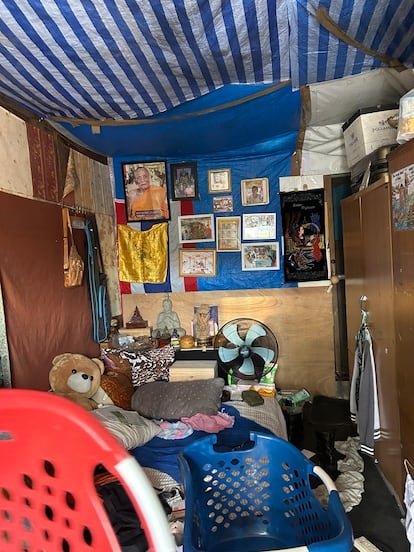
The situation is the same in much of Asia. During the heatwave in April, temperature records were broken in Cambodia, Bangladesh, the Philippines, and Vietnam. According to the World Meteorological Organization, Asia is severely affected by climate change and suffers the highest number of disasters each year.
Although research into the links between mental health and heat is still in its infancy, studies in Bangladesh found that a 1ºC rise in temperature increased anxiety disorders and depression, while in Japan, Korea, and Taiwan it was also associated with higher suicide rates.
“Bangkok residents sleep in beds that are soaked with sweat. They have to get up two or three times a night to shower”
Raja Asvanon, researcher at the Stockholm Environment Institute
Children are particularly vulnerable to the effects of extreme heat, according to Basil Rodriques, UNICEF’s regional health adviser for East Asia and the Pacific, because of their limited thermoregulation capacity. According to the UN children’s agency, children in 16 countries are exposed to one more month of extreme heat per year than a child was 60 years ago. While there is evidence that neurological development, mental health, and general well-being are affected, it is difficult to know what long-term heat exposure may mean for children’s mental health, says Rodriques, adding that those living in rural and urban areas will likely feel it differently. For some it will mean confinement, for others hunger.
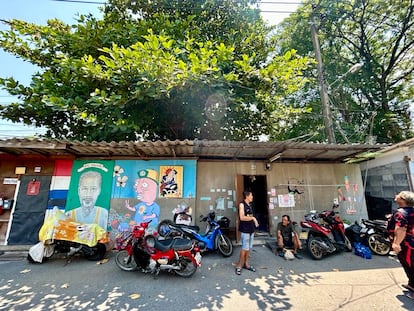
But extreme heat is not the only weather phenomenon affecting people’s mental health in Asia, Juengsiragulwit continues. Her department also sees an increase in people seeking mental health support during times of flooding. According to the WMO, flooding — which typically hits Asia in September and October — is on the rise across the continent as a result of melting glaciers and rising sea levels. At that time, Bangkok’s streets, which lack a good sewage system, are flooded with murky water that sometimes enters homes, damaging them and endangering the safety of residents. Research in India found that teenagers who had experienced a flood were more likely to suffer from depression, anxiety, and stress.
According to some experts, high levels of pollution also have consequences for mental health. Several Asian countries, such as Bangladesh, Pakistan, India, and Nepal, have the most toxic air in the world due to transport, cooking fuels, coal-fired power plants or agricultural burning, which can cause cancer, cardiovascular, and respiratory diseases. The worst time of year for pollution in Southeast Asia is April, when temperatures are highest. “If you don’t open the windows, the heat builds up, but if you open them, people are exposed to pollution,” says Asvanon.
Countries such as Thailand, Nepal, and Vietnam often issue stay-at-home orders, close schools, or discourage outdoor activities, which experts say increases levels of depression and anxiety. Ilan Kelman, a professor of disasters and health at University College London, believes mental health depends on strong health systems and on not stigmatizing these difficulties.
Although Thailand has a government department dedicated to mental health, not all Asian countries do, and in some, depression, schizophrenia, and bipolar disorder are highly stigmatized. “We accept that we can break a bone or get infections, but many cultures stigmatize conditions like dementia, schizophrenia, or depression,” says Kelman.
Beyond normalizing mental health care, Asvanon of the Stockholm Environment Institute believes Asian cities need to make environmental changes to reduce temperatures, such as more wetlands, canals, and green spaces and providing climate shelters, especially for people on lower incomes. “This is the governance we need in a century where we are seeing high heat stress as a normal condition,” she says.
Yet all this is merely treating the symptoms, not the cause. In Asia, 13 economies have yet to commit to net-zero emissions and only one country (Vietnam) has agreed to phase out coal power by 2030.
The silent killer of the Sahel
Ouagadougou (Burkina Faso)
By Èlia Borràs
In his 80 years of life, Andry Ouedraogo Regma had never experienced anything like this. Between April 1 and 5 this year, the Sahel experienced temperatures of 45ºC, according to a study by the World Weather Attribution (WWA) initiative. Regma, a resident of the working-class neighbourhood of Rimkieta, on the outskirts of Ouagadougou, the capital of Burkina Faso, recalls with a mischievous smile his last victory: surviving that month of April. “I suffered the heat as if it were a disease,” he says, admitting that he spent those days, with nights that never dropped below 32ºC, in a state of semi-consciousness and extreme fatigue.
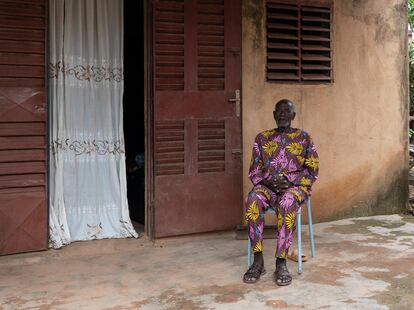
Heat waves are expected to claim an estimated 1.6 million lives worldwide by 2050, according to a World Economic Forum report from January 2024. Albert Manyuchi, a researcher at the Global Change Institute at the University of the Witwatersrand in Johannesburg, says that “there are between 12,000 and 19,000 heat-related deaths in Africa, and half of these are attributed to climate change,” although the data varies from year to year and is imprecise.
According to the WWA study, climate change, caused by the burning of fossil fuels, is making heat waves “more frequent, longer and hotter” around the world. In the case of Africa, human-caused climate change, coupled with the warming of the Pacific Ocean — the El Niño phenomenon — have created a perfect storm to put entire populations at risk from high temperatures. Between 1970 and 2021, Africa accounted for 35% of climate-related deaths, while only 40% of Africans have access to early warning systems.
According to WWA, mortality from extreme heat will increase fivefold by 2080 in countries such as Mali if global warming is not halted. Between April 1 and 5 this year, Burkina Faso recorded the highest temperatures in 200 years.
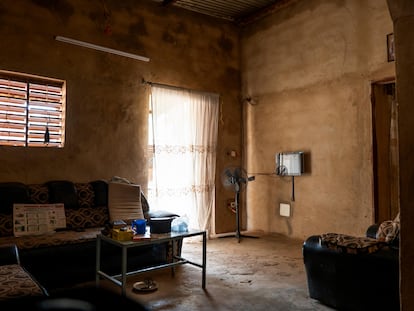
There is no clear measurement of the victims of these extreme temperatures. The ICD 10 index — a standardized code used to classify causes of death around the world — does not take these cases into account, says Caradee Wright, a scientist at the South African Medical Council and a specialist in climate change and health, in a telephone interview. “Often a person may have all the symptoms of heat stroke, but the cause of death will be recorded as a heart attack.” South Africa, she adds, does have a model that records deaths associated with high temperatures. In the last 15 years, 0.4% of the country’s deaths have officially been caused by this. But “this figure is too low, we need to improve the models to collect data,” she admits.
Amid the uncertainty, some people are trying to gather data on their own. In Burkina Faso, Kiswendsida Guigma is constantly calling cemeteries, morgues, and hospitals. The climatologist, an expert at the Red Cross Climate Centre, is determined to get figures that show that the heat is killing people in his country, but for now he can only give an estimate: “In half a day [in April], the Ouagadougou cemetery received 52 bodies, while normally there would be five,” he says.
During April and May, in the neighborhoods of Ouagadougou and other cities in Burkina Faso, it was common to see iron chairs, a tent, and many cars and motorbikes in front of a house, signs that a funeral was taking place. In Mali, WWA, an initiative created by climate scientists from several countries, notes that between April 1 and 4, the Gabriel Touré hospital in Bamako recorded 102 deaths, a figure significantly higher than normal. In 2023, for example, 130 deaths were registered during the entire month of April. “Although statistics on the cause of death have not been provided,” notes WWA, “about half were over 60 years old, and the hospital reports that heat probably played a role in many of the deaths.”
I need a death toll from the heat to get the attention of decision-makers”
Kiswendsida Guigma, climatologist
“I need a death toll from the heat to get the attention of decision-makers,” says Burkinabe climatologist Guigma. “There are no clear figures, which is why we do not give these heat waves the importance they deserve. These extra degrees are what make the difference between life and death for many people.”
Wright also agrees about the urgency of an institutional response: “Africa will be the continent where the consequences will be worst. If people do not have basic services covered like in other parts of the world, if there are floods, the house collapses and they do not have insurance… people will be left with nothing.” And she adds: “We need a continental response to build community resilience to climate change, but this requires government support and a budget.”
According to World Weather Attribution, if temperatures continue to rise by one degree more, extreme events will become 10 times more frequent in the Sahel. “Our countries have less capacity to respond because resources are allocated to other priorities,” says Guigma. For example, the torrential rains — also caused by climate change — that hit the Sahel from the end of June caused more than 500 deaths and thousands of victims. Or the jihadist terrorism that is ravaging the region and has caused Mali and Burkina Faso to increase their military budgets. “The heat waves in Burkina Faso are already affecting agriculture and worsening food insecurity, which could be a threat to the country’s stability,” says Manyuchi.
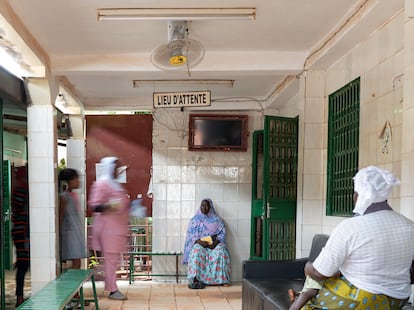
Elderly people and people with pre-existing illnesses, such as diabetes or cardiovascular problems, are the most vulnerable. This is confirmed by Dr. Abdoul Ouedraogo, from the Clinique Solidarité in Rimkieta (Ouagadougou), who explains that in these cases, the body loses more water than it consumes.
The doctor also recalls that during the month of April, patients recovering in his clinic would feel dizzy again as soon as they went outside. This was compounded by a period of unusual, unpredictable and very long power cuts, lasting up to 14 hours. Ouedraogo has air conditioning in the clinic, but in the midst of these blackouts, it was of little use. “Even I couldn’t take it anymore,” he laments, explaining that he would hold consultations with the door open to let in some fresh air, thereby risking the confidentiality of his patients.
Less than 20 minutes by car, but a world away from climate change, the Petit Paris restaurant in the Gounghin district of Ouagadougou is not hot, even though the outside temperature is over 40ºC and there is a power cut. A generator keeps the establishment cool, almost freezing. “The most vulnerable houses [in the Sahel] are 10 degrees warmer than others, which affects sleep and breathing. Even breastfeeding women spend less time with each feed,” explains WWA.
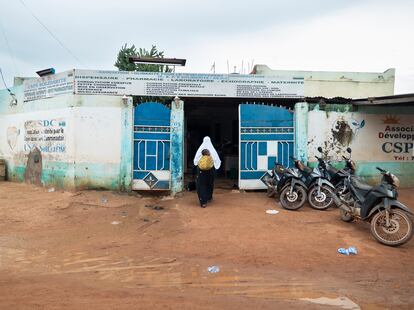
Today, Dr Ouedraogo turns on the air conditioning. “Now you can work,” he sighs, as the unit reads 22ºC inside and 31ºC outside. Not so lucky is the octogenarian Regma, whose house was only hooked up to electricity a year ago. At that time, he got rid of the solar panel and batteries he was using to give them to one of his sons, who lives in a neighborhood that has not yet been electrified. He thought he would not need them anymore, but he was unable to turn on his fan during the intense heat wave.
Credits
Coordination: Ana Carbajosa and Raquel Seco
Reporting: Silvia Blanco, Rebecca L. Root, Èlia Borràs and Ana Carbajosa.
Design: Ruth Benito
Development: Carlos Muñoz
Editing: Silvia Blanco, Beatriz Lecumberri and Raquel Seco
Sign up for our weekly newsletter to get more English-language news coverage from EL PAÍS USA Edition
Search
RECENT PRESS RELEASES
Related Post
